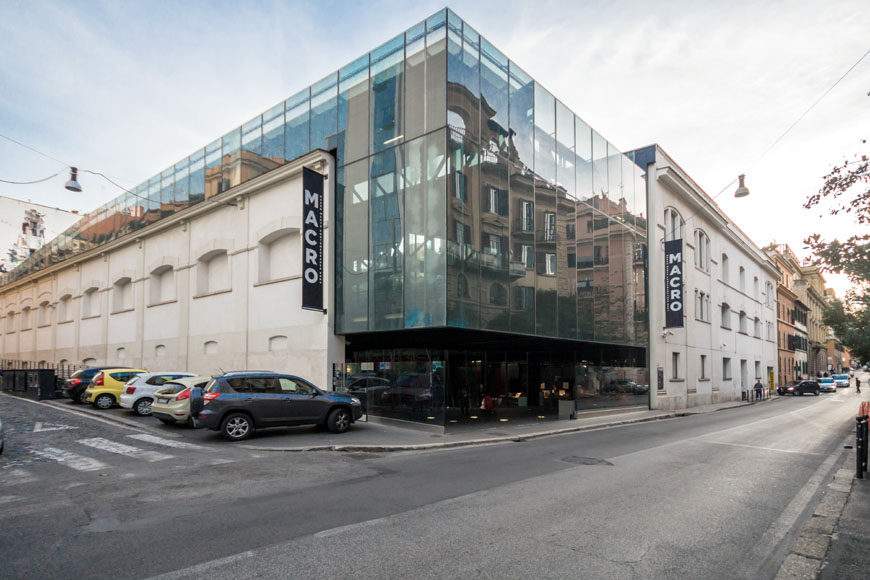A museum-organism, great artists and no exhibitions: this is what De Finis' Macro Asylum in Rome will look like
The Macro Asilo experimental project has been presented, which, from September 30, 2018 to December 31, 2019, will transform the Macro in Rome into a new device, a true hospitable and relational “living organism” that will focus on relationships, encounters, openness, and dialogue with the city and the rest of the world, with the public, with citizens and with anyone who feels like walking through its environments (and to facilitate this aspect, the new Macro will have free admission). The new experiment that will be implemented for over a year will want to investigate precisely the civic function of the museum within the city. In addition, the Macro Asilo project, which will be curated by Giorgio de Finis(designated for this role last December: here is our interview with previews precisely on Macro Asilo) will constitute the first piece of the Contemporary and Future Pole, which will become a presence on the contemporary complementary to the other two great Roman realities ofcontemporary art, the MAXXI and the National Gallery of Modern and Contemporary Art.
In order to achieve these goals, the museum has been radically rethought, starting with its spaces, with an exhibition design created by architect Carmelo Baglivo. Thematic environments, selections from the collection, works created for the occasion by renowned artists (for example, Michelangelo Pistoletto’s Table of Tables ), a room dedicated to "Rome," the room of words (dedicated to the vocabulary of the contemporary), the reading room, the media and radio room, and the rooms-ateliers (i.e., four twin spaces designed for artists who will create a work inside the museum: de Finis has never made a secret of imagining his Macro as a place of production). And again, artist environments, work-rooms, installations, performances. And no exhibitions: if anything, a daily calendar of events, meetings, workshops, installations, performances, lectures, video projections, and anything else that those who attend the museum can develop and propose.
The names of the artists who will take part in Macro Asilo’s activities in the first months of operation were also listed: among them, Michelangelo Pistoletto, Daniel Buren, Dora Garcia, Krysztof Bednarski, Pietro Gilardi, Alberto Garutti, Marzia Migliora, Liliana Moro, Pablo Echaurren, Gianni Pettena, Melania Mazzucco, Elina Chauvet, Wim Wenders, Alfredo Pirri, Gianni Asdrubali, Giovanni Albanese, Gianfranco Notargiacomo, Ria Lussi, Piero Mottola, Giuseppe Stampone, Fabrizio Crisafulli, and the Stalker collective. Each of them will leave at the Macro a testimony of their work, a multitude of acts, practices and forms of research that will feed by progressive accumulation a real material archive of this experience. The result will be an archive that, in addition to having a physical space in the Museum, will then have a constant cross-reference on the web and social networks to bear continuous witness to the work being carried out within the Museum.
A challenge, in essence, for the city’s administration, which with Macro Asilo is attempting a new experiment, never before attempted in any other Italian museum, and towards which there is therefore great expectation, among those who have strong expectations and those who are skeptical. Presenting the project was the deputy mayor of Rome as well as councillor for cultural growth, Luca Bergamo, who said, “Macro Asilo is part of an overall strategy of rethinking the role of cultural institutions in the capital and their relationship not only with their communities of reference, but with the whole city. On the one hand, with the recent launch of MIC, the new free access card to civic museums, there has been a decisive impulse to increase people’s participation in Rome’s cultural life and the opportunity to learn about and enjoy its history and heritage. On the other hand, with Macro Asilo we aim precisely at changing the mode of relationship and not of simple fruition between the museum and the public, questioning the forms with which this has been consolidated over time.”
More specifically, Giorgio de Finis explained some characteristics of Macro Asilo: “Works of art as a finished product and exhibitions as a collection of the same, are only one of the possible forms of transmission of knowledge and culture. The new opportunity with Macro Asilo is to go beyond such a predefined mode of fruition and instead constantly enter into a relationship with the producers of art, with the artists, with their thinking, their paths, their complex system of cognitive processing. The aim is precisely to offer new tools and opportunities for people to grow by experimenting with novel and original practices. In this mode of relationship, the public itself in all its forms and presences will in fact mark and modify the path and experience of the community of artists who will animate the museum over the next 15 months.”
The museum, in short, will open to the city and to everyone. The opening is set for a big party open to all on September 30. Information can be found at www.museomacro.it.
 |
| A museum-organism, great artists and no exhibitions: this is what De Finis' Macro Asylum in Rome will look like |
Warning: the translation into English of the original Italian article was created using automatic tools. We undertake to review all articles, but we do not guarantee the total absence of inaccuracies in the translation due to the program. You can find the original by clicking on the ITA button. If you find any mistake,please contact us.





























